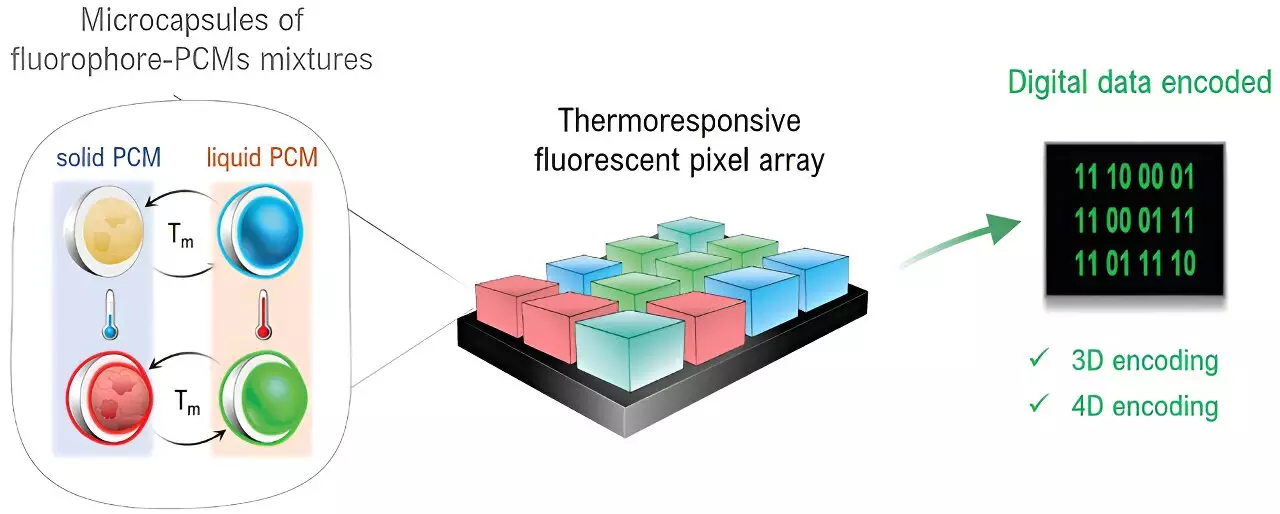In an era propelled by the exponential growth of digital data, the quest for innovative encoding and storage solutions has never been more critical. A pioneering team of researchers has recently introduced a groundbreaking digital encoding and data storage system, utilizing a unique blend of microcapsules infused with luminescent dyes and phase change materials. This ambitious project, spearheaded by accomplished scientists including Dr. Claudio Roscini and Prof. Daniel Ruiz-Molina from the ICN2 Nanostructured Functional Materials Group, signifies an essential leap in the advancement of complex encryption technologies aimed at bolstering cybersecurity and countering counterfeit practices. The findings are published in the prestigious journal, Advanced Functional Materials.
At the heart of this innovative system lies a sophisticated pixel mechanism that employs microcapsules containing a specially formulated mix of fluorescent dyes and paraffin-based phase change materials. These materials, renowned for their thermal properties, have been ingeniously adapted by the researchers to enable dynamic data encoding based on their temperature-sensitive behaviors. When subjected to varying temperature or voltage, the microcapsules exhibit distinct emission colors, effectively translating physical changes into digital information.
This sophisticated arrangement allows for not just simple binary data encoding but rather a multi-faceted approach, where data can be represented across three dimensions. The initial two dimensions correspond to a conventional 2D layout akin to QR codes, while the third dimension of information is derived from the vibrant colors emitted by the pixels. Remarkably, the system progresses further into a fourth dimension, dictated by the behavioral response of the microcapsules to thermal stimuli. This complex interplay between color and temperature grants a new level of depth to data encoding strategies.
The implications of this innovative data storage system are vast and multifaceted. With its ability to perform advanced encoding methods such as 3D encryption and 4D data storage, the technology brings forth substantial advancements in several fields. For instance, in the realm of anti-counterfeiting, the dual-layer encoding mechanism can facilitate enhanced product verification, making it increasingly difficult for counterfeit products to infiltrate markets. Additionally, the high-density storage capabilities imply that vast amounts of information can be compactly stored and securely retrieved, a considerable asset for industries reliant on data integrity and accessibility.
As organizations continue to grapple with data security concerns, this novel approach offers a low-cost, efficient solution poised to redefine existing standards in both security and storage. The integration of luminescent dyes and phase change materials in a single encapsulated system exemplifies how interdisciplinary collaboration can yield transformative results, thus paving the way for future advancements in the digitization landscape.
The research led by Dr. Roscini and his collaborators showcases the potential of merging physical properties with data encoding techniques to address contemporary challenges in cybersecurity and data storage. As the digital world continues to evolve, the quest for innovative, secure solutions will undoubtedly intensify. This breakthrough not only marks a significant step forward for the scientific community but also holds promise for a future where data security and accessibility are enhanced through sophisticated, cost-effective methodologies. By continually reimagining the dynamics of data encoding, we can strive toward a more secure and efficient digital environment.


Leave a Reply